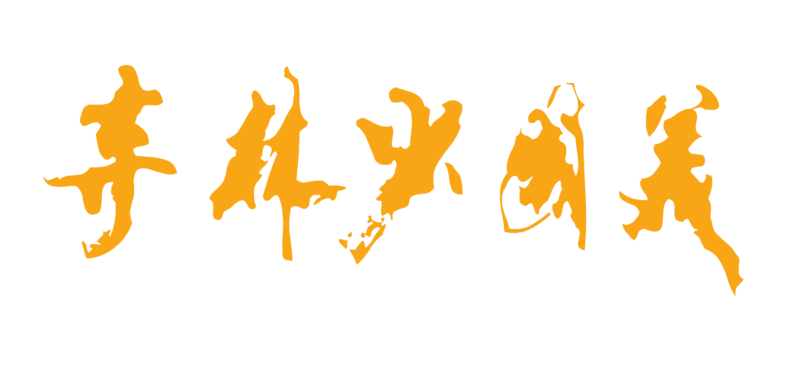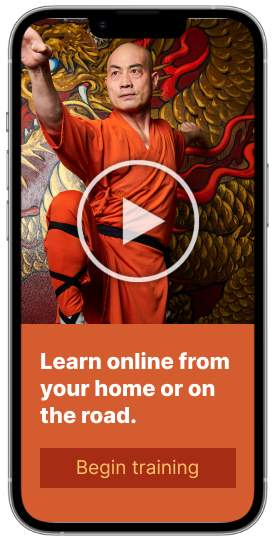Objective Stretching
April 1, 2000
-Kung Fu Magazine
By Shi Yan Ming and Allan David Ondash
Nearly every martial arts system has its own method of warming up. There are probably enough different stretching exercises to create a whole new stretching system. But what’s wrong with the old ones? Were they too impossible? Too painful? Take one look at a Yoga chart and you’ll be convinced that flexibility is a discipline and not simply a way to “loosen up.” However, some practitioners, including some of high martial arts rank, tend to choose the easiest way to stretch before a work-out. These less than demanding warm-up routines often force the practitioner to spend too much time trying to get stretched out enough to begin a work-out. This then shifts the progress of flexibility into neutral. If one is not visibly more flexible than he was six months ago, it is time to go back to stretching school. Let us first answer a few common questions before we learn how to re-evaluate the way we stretch. Why Stretch? Most athletes feel the need to be as flexible as possible. When their muscles are warm and loose, they perform better. Good flexibility greatly increases circulation and dramatically reduces the risk of injury. For martial artists in particular, stretching is monumental in providing the flexibility necessary to accommodate the sometimes obscure positions appended to a style, and also for the development of the hamstring muscles, the major factor in nearly all kicking maneuvers. Should I warm up before I Stretch? Absolutely. By performing external Chi Kung (simple joint sway and rotation and vibration methods) as a prerequisite to stretching, one will find it much easier to fall deeper into a stretch. This is so because it is often not just tight muscles that prevent one from gaining flexibility, but stiffness in the joints also. Chi Kung prior to stretching will increase circulation and help the muscles warm up faster, thus allowing one to save valuable practice time. What Area Should I Stretch the Most? All good martial arts styles utilize and emphasize nearly every part of the body. Therefore it is a good idea to stretch completely from head to toe. Even systems such as wrestling and boxing should utilize head to toe stretching. Though these systems do not require kicking, loosening the upper body more than the lower will introduce unwanted strain on the legs many times disabling the practitioner from proper advance and retreat maneuvers. The same is true for systems that emphasize the legs more than the hands. There is a bit of Chinese kungfu philosophy that states that “the whole body is the fist.” So with this sounding as true as it is, shouldn’t the whole body be flexible and ready to obey instantly? A stiff body surely can not. Should I Do Easy or Hard Stretches? Unless you are nursing an injury, in which case you should never force yourself, try to perform two-thirds of your stretching routine in the difficult realm, rewarding yourself with the final third in the easy realm. If you do the easy ones first, the harder ones will always seem harder. Creating an Objective Now that we have an idea of how to set up a routine, we can embark on an objective. However, if you say, “my objective is to do a split in thirty days,” chances are you will never get there, just as a person that is working on getting rich will never get there by saying, “I’m going to be a millionaire!” But if he puts a dollar in the bank today, he has chosen the right way. Just like the would-be millionaire, your objective should not be a mile, but rather one inch.
Begin by choosing a stretch whereby you can use the position of your fingertips as a reference point, e.g. a sitting head-to-knee stretch with both legs straight and the hands flat on the floor alongside them. First, take in a deep breath. As you breathe out, slide your hands forward along the floor making sure they remain flat as you draw your head toward your knees. When you are out of breath, stop and hold your position as you replenish your oxygen. You have reached the threshold, (the point within a stretch where the initial tension is felt). Next, take your mind away from the stretch by concentrating on the index and middle fingers of each hand. As you exhale the second time, crawl one inch forward with your fingertips and hold. At this point, be sure that your elbows are locked and your hands remain flat so they do not slide backwards, and be positive that you can maintain proper breathing, that is, breath without tension. If so, inhale again, crawl another inch and hold. If you are still in control of the tension, inhale a final time, crawl one-half inch and hold for three very relaxed inward and outward breaths. Congratulations! You have just gained two and a half inches of flexibility in less than a minute! This is known as objective stretching and can be used for any flexibility routine. Marking Progress As one begins an objective stretching routine, it is a good idea to start marking progress. This will allow the practitioner to actually see how far he has gone, and how far he desires to go. In other words, if there is no starting line, how will one know where the finish line is? Marking progress is simple. Use pieces of tape, or pencil marks. Put them on the floor, the wall, or wherever, and mark the position of the fingertips (or the foot in the case of a leg pulling stretch) at the threshold points of three different and difficult exercises. In either case, it is a good idea to mark the position of your feet so that you begin consistently from the same spot. Now you are ready to start an objective stretching routine. Using the fingertips or foot as a guide, move no more than two and a half inches from the threshold point each day until you are sure you can maintain proper relaxed breathing, then move forward little by little each week until you reach your goal. Additionally, you need not try marking your progress each time you move your fingers or your foot. Everyone can judge about how far an inch is, so mark it when you are finished. A Little Past the Pain Most practitioners, especially while performing difficult stretches, tend to stop at the threshold. In an attempt to venture further into the stretch, one might begin pulling and tugging, or bobbing up and down. None of these are beneficial. A muscle is like a rubber band, you can stretch it a little and let it go, or you can stretch it a lot and alter its tensile properties. Objective stretching is a great way to go a little bit past the pain and gain the type of flexibility that stays with you. Still Vs. Moving Stretch For practitioners who favor more of an aerobic type of stretching over sitting routines there is objective swing kicking. Swing kicks are typical pendulum type maneuvers executed from a standing position on one leg. The three basic and most commonly used are, front swing, side swing, and back swing. To practice these objectively, mark the position of the stationary foot on the floor next to a wall. Place your foot on the mark and begin performing the desired kick in a relaxed and repetitious manner while keeping the knee of the kicking leg locked, the knee of the base leg slightly bent, and your back as straight as possible. Continue swinging the leg higher and higher until the first moderate amount of tension is felt. Note the highest position of your foot on the wail, stop and place a marker there. That is the threshold. Each week, try to move an inch or two past the threshold and continue marking your progress. Over-Stretching There is a point within almost all stretches where tension begins to overpower relaxation. A good rule to follow is that once a flexibility maneuver has reached a point where it begins to invade the proper breathing sequence necessary to maintain it, it is time to stop. If at that point you are satisfied with your progress, fine. If not, the stretch should always cease at that point until proper relaxed breathing can be once again secured. Staying Flexible Objective stretching allows the practitioner to maintain any desired degree of flexibility. Without creating tangible goals by using tools such as “progress marking” it becomes very easy to slip away from the objective. And as time continues to pass through oneself, the objective can become even more clouded. But as Sifu Shi Yan Ming has clearly demonstrated, one can make better use of his time and make better, longer lasting results, by stretching with the mind, not the muscle.






